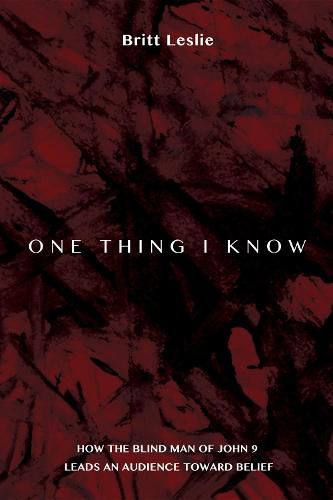Readings Newsletter
Become a Readings Member to make your shopping experience even easier.
Sign in or sign up for free!
You’re not far away from qualifying for FREE standard shipping within Australia
You’ve qualified for FREE standard shipping within Australia
The cart is loading…






This title is printed to order. This book may have been self-published. If so, we cannot guarantee the quality of the content. In the main most books will have gone through the editing process however some may not. We therefore suggest that you be aware of this before ordering this book. If in doubt check either the author or publisher’s details as we are unable to accept any returns unless they are faulty. Please contact us if you have any questions.
This work employs multiple methodologies to analyze the story of the man born blind (John 9) in order to discern how this episode serves the greater purpose of the Gospel, stated in 20:31: so that you may trust that Jesus is the Messiah, the Son of God, and through trusting you may have life. The analysis of linguistic patterns; narrative structure; cultural anthropology; and an analysis of irony, humor, and wit are each employed. These are all synthesized in the final chapter, which makes an attempt to discern how an ancient performance of John 9 might look, and how such a performance might sway an ancient audience toward trust in Jesus as Messiah.
$9.00 standard shipping within Australia
FREE standard shipping within Australia for orders over $100.00
Express & International shipping calculated at checkout
Stock availability can be subject to change without notice. We recommend calling the shop or contacting our online team to check availability of low stock items. Please see our Shopping Online page for more details.
This title is printed to order. This book may have been self-published. If so, we cannot guarantee the quality of the content. In the main most books will have gone through the editing process however some may not. We therefore suggest that you be aware of this before ordering this book. If in doubt check either the author or publisher’s details as we are unable to accept any returns unless they are faulty. Please contact us if you have any questions.
This work employs multiple methodologies to analyze the story of the man born blind (John 9) in order to discern how this episode serves the greater purpose of the Gospel, stated in 20:31: so that you may trust that Jesus is the Messiah, the Son of God, and through trusting you may have life. The analysis of linguistic patterns; narrative structure; cultural anthropology; and an analysis of irony, humor, and wit are each employed. These are all synthesized in the final chapter, which makes an attempt to discern how an ancient performance of John 9 might look, and how such a performance might sway an ancient audience toward trust in Jesus as Messiah.